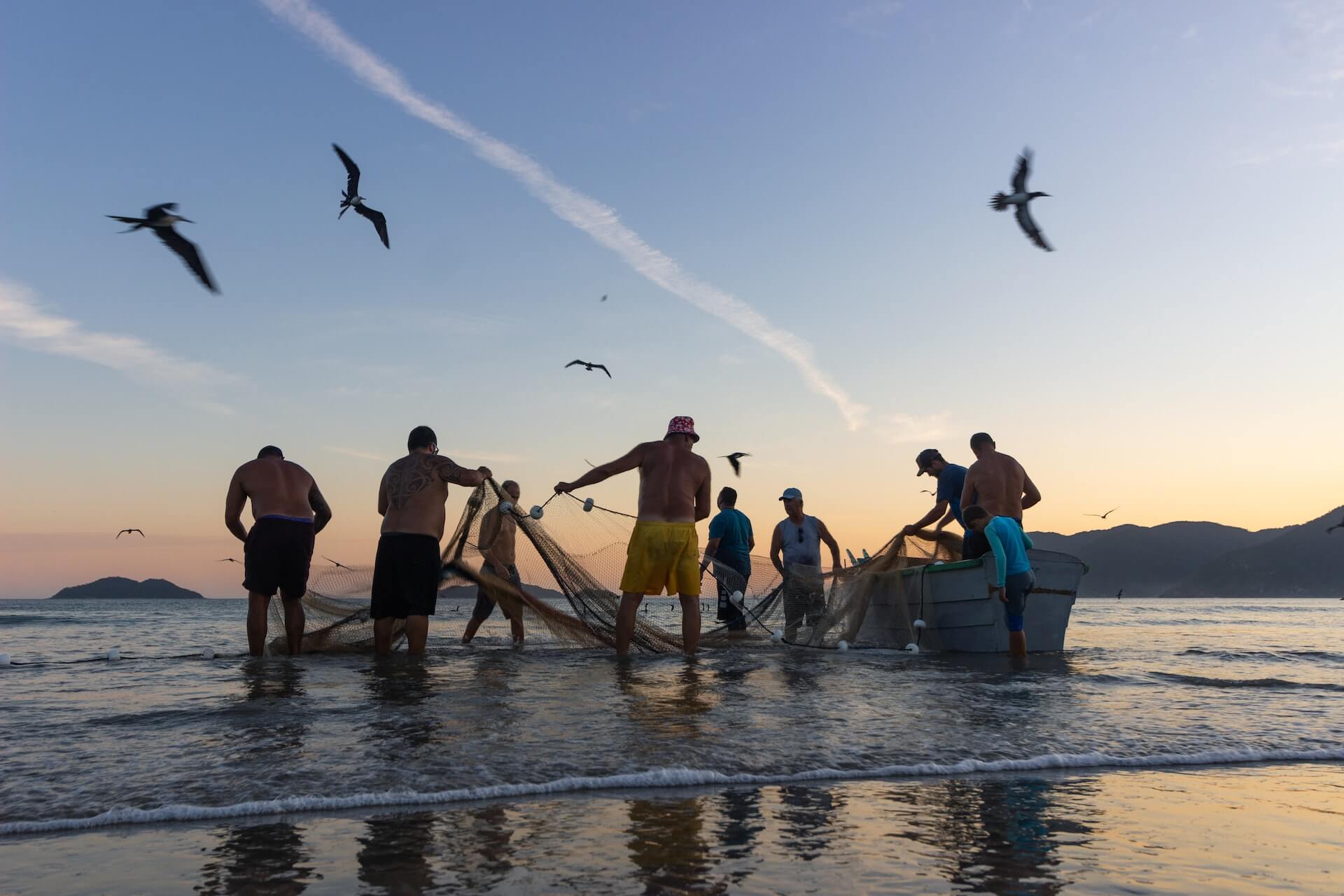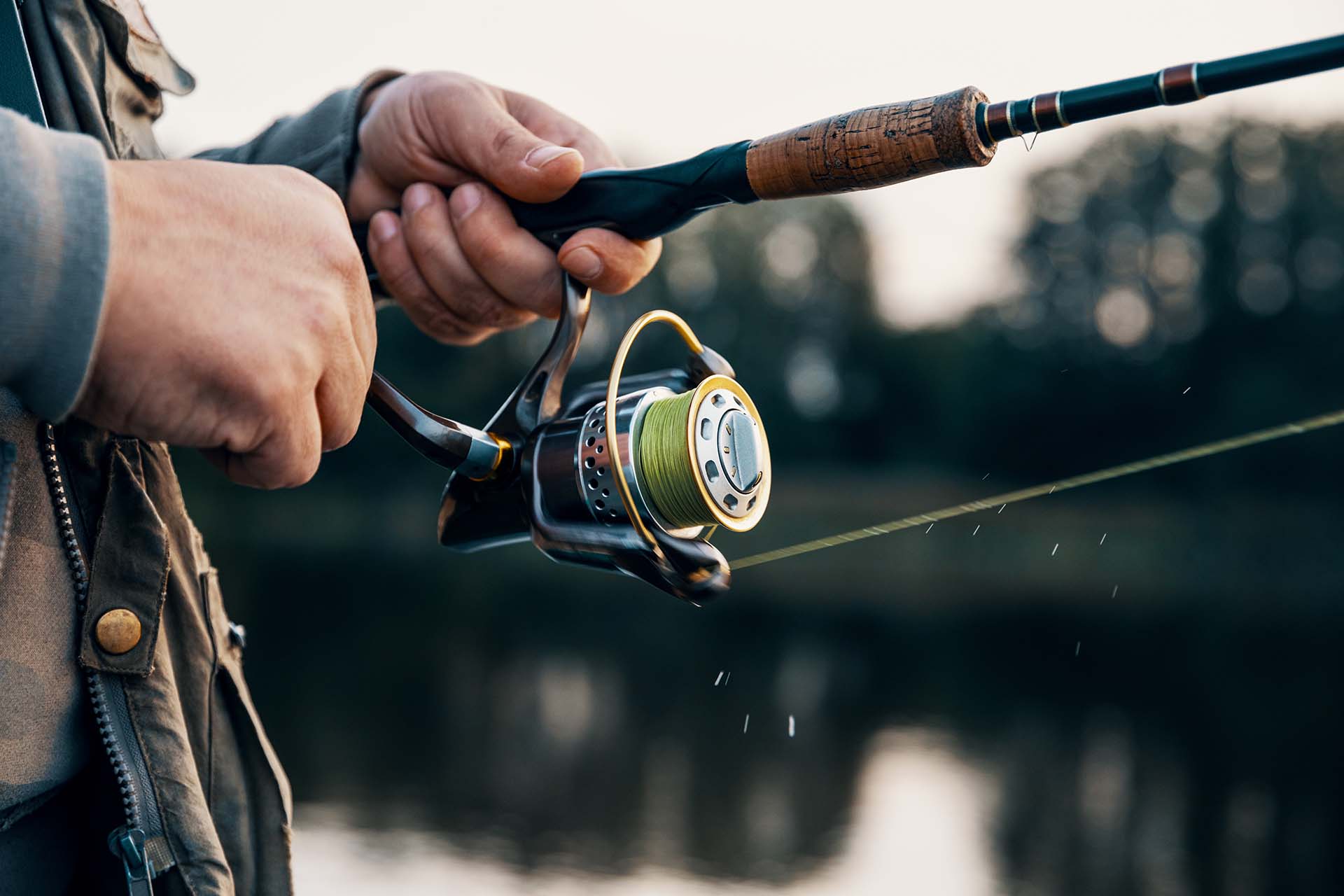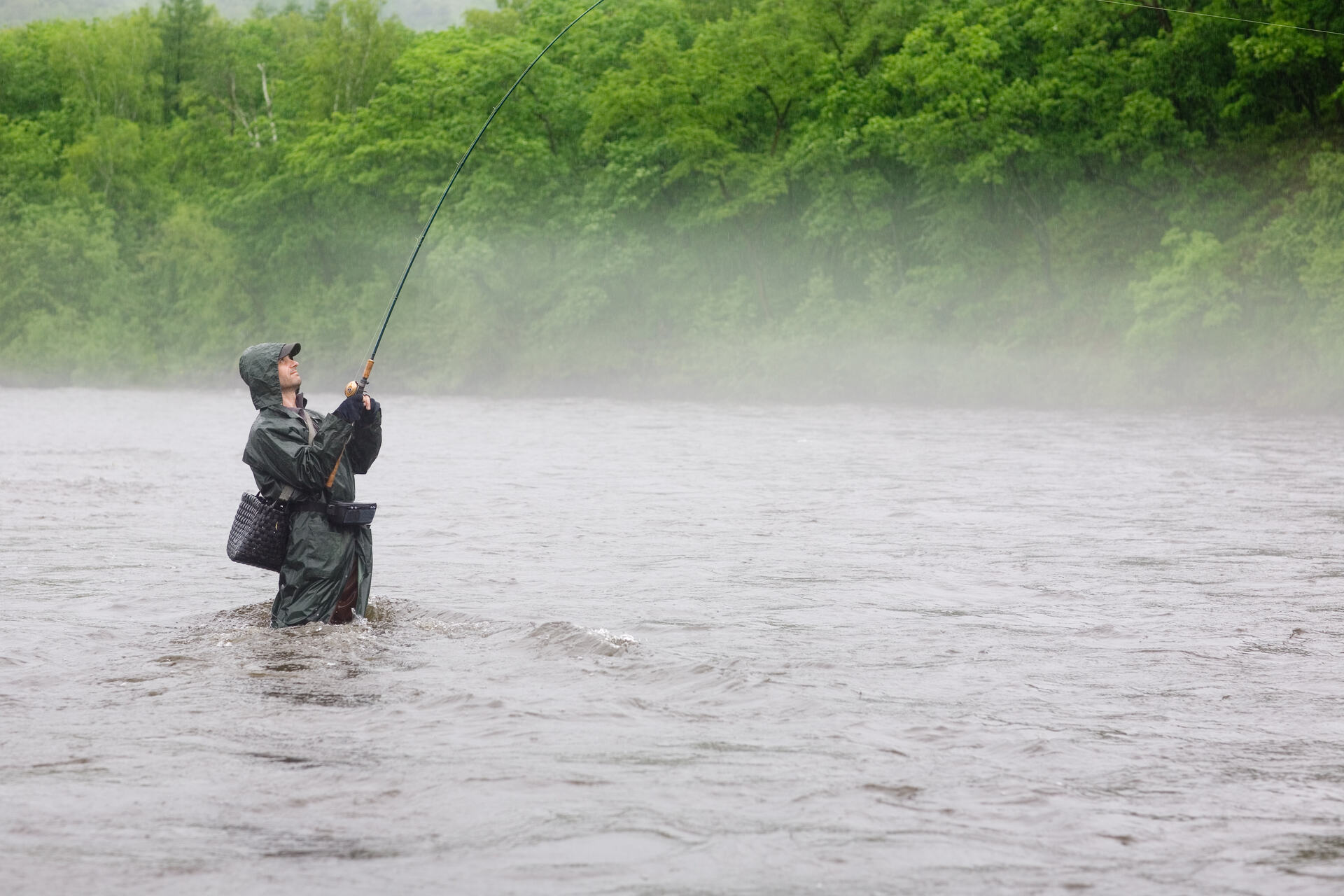“Why can’t I catch fish?” – a question that echoes the frustration of many anglers who have cast their hopes upon the waters, only to be met with elusive success. The quest for the perfect catch is a pursuit steeped in mystery, an intricate dance between the angler and the fish. In exploring the angler’s dilemma, we embark on a journey to unravel the secrets that lie beneath the surface.
Why Can’t I Catch Fish?
Several factors may contribute to the challenge. For example, misreading habits, overlooking seasonal angling nuances, using the wrong gear, neglecting bait and lure selection, and faltering in casting techniques. Mismanaging reel and rod setup, overlooking the impact of fishing weather conditions. Also, they succumb to common angling mistakes and underestimate the importance of consistent fishing practice and patience.
According to Statista, In 2022, 87% of individuals engaged in fishing reported a successful catch during their most recent outing in the United States. Conversely, a mere 18% of angling participants experienced an unsuccessful catch on their last excursion. So, to be in a successful group of anglers, check out our tips and tricks for having a triumphant fish at the end of the day on the waters.

Understand Fish Habits and Patterns for Strategic Positioning and Targeted Approaches
Fish exhibit distinct patterns and habits influenced by species, environment, and weather conditions. Armed with this knowledge, anglers can strategically position themselves and tailor their approach to match the preferences of the targeted fish.
Whether deciphering feeding times, identifying preferred depths, or recognizing specific movements related to mating or migration, comprehending the behavior provides invaluable insights. This understanding allows anglers to select the right bait, employ suitable techniques, and increase the likelihood of enticing and hooking the elusive catch.
Decoding the behavior language enhances the angler’s ability to predict and respond to the underwater nuances. As a result, you’ll transform each angling expedition into a more informed and rewarding experience.

The Role of Weather and Environmental Conditions
Weather conditions have a significant influence on fish activity, shaping their behavior and feeding patterns. For instance, changes in temperature, atmospheric pressure, and sunlight levels can affect the distribution and depth at which fish are found.
When you understand these fishing weather conditions, you’ll adapt your strategies accordingly. Warmer temperatures may encourage fish to move to shallower waters, while cooler weather might prompt them to seek deeper, more sheltered areas. Additionally, variations in cloud cover and wind intensity can influence the visibility of lures and baits.
What Are the Best Times and Seasons for a Successful Catch?
Understanding the best times and seasons for fishing is crucial for optimizing your chances of making fish bite. Adjusting your tactics based on the specific characteristics of each season ensures a more strategic and rewarding angling experience. Here’s a table with some tips you should follow in different seasons.
| Season | Best times | Fishing tips |
|---|---|---|
| Spring | Early morning and dusk | Fish are more active during warming waters and use bright and vibrant lures for visibility |
| Summer | Early morning and evening | Use topwater lures in low-light conditions since fish tend to be in deeper waters during heat |
| Fall | All day, especially midday | Fish feed voraciously before winter, so use natural-colored baits for realism |
| Winter | Midday | Fish in slower, deeper pools for warmth. Use slow-moving lures to entice sluggish fish |
Pick the Right Location and the Water’s Body
A carefully chosen angling location significantly influences the probability of a fruitful catch. Knowledge of the water body’s topography, such as underwater structures, drop-offs, and vegetation, is essential for identifying potential effective fishing spots. Whether it’s a secluded cove, a bubbling stream, or the edge of a submerged structure, the right angling spot enhances the likelihood of encountering active fish.

Explore Some Essential Tips on How to Find Productive Fishing Areas
Let’s check out the essential tips for finding potential fish-holding areas. Here are the steps you need to take to boost your success:
Research Local Fishing Reports
Stay informed by checking local angling reports. These reports often provide valuable insights into recent catches, bait preferences, and successful fishing spots in your area.
Utilize Online Resources
Explore online forums, websites, and social media groups dedicated to angling. Engage with fellow anglers to gather tips on productive fishing locations and recent success stories.
Talk to Local Anglers
Strike up conversations with local anglers, bait shops, or fishing guides. They possess valuable firsthand knowledge about the best fishing spots, seasonal patterns, and effective techniques for your specific region.
Study Topographic Maps
Examine topographic maps of the water body you intend to fish. Look for underwater structures, drop-offs, and contour lines that indicate potential fish-holding areas.
Consider Seasonal Changes
Understand how angling spots change with the seasons. During warmer months, fish may move to shallower waters, while in colder months, they might seek deeper areas. Adjust your approach accordingly.
Explore Transitional Zones
Target transitional zones where different types of underwater structures converge. These areas often attract various species and increase the likelihood of a successful catch.
Observe Bird Activity
Birds, especially diving seabirds, can be indicators of active fish. If you notice birds diving into the water, it’s a sign that there may be schools of baitfish and larger predatory fish might be nearby.
Check Water Clarity
Clear water conditions can make fish more selective about their habitat. In clear waters, focus on natural-looking baits and be mindful of your presentation.
Experiment with Different Depths
Fish are often found at various depths depending on the time of day and weather conditions. Experiment with different depths to find where the different species are most active during your fishing trip.
Stay Mobile
If you’re not getting bites in one area, don’t hesitate to move and explore new spots. Fish can be highly mobile, and changing locations can lead to more productive fishing.
Check Your Fishing Gear Essentials
The right angling gear is important for anglers seeking success on the water. Essential equipment ensures a smooth and enjoyable fishing experience and increases the likelihood of a bountiful catch. A well-balanced fishing rod and reel combination tailored to the type of angling you intend to do is the foundation of your gear. The choice of fishing line is equally crucial, as it connects you to the fish and must be selected based on the species you’re targeting and the fishing conditions.
Tackling the underwater realm requires an assortment of hooks, sinkers, and swivels, each serving a specific purpose in enticing and securing your catch. Don’t overlook the importance of a reliable tackle box to keep your gear organized and easily accessible. After all, you need to handle diverse situations but also add precision to your angling strategy, making each expedition more rewarding.
What Are the Common Equipment Mistakes and How to Avoid Them?
One prevalent mistake is neglecting to match the fishing gear to the specific type of fish and angling conditions. Using the wrong reel and rod setup or line can decrease sensitivity and compromise control.
Another frequent error is the improper maintenance of equipment. Neglecting to clean and lubricate reels, inspect rods for damage, or replace worn-out lines can lead to decreased performance. And, in some cases, safety equipment failure.
Additionally, overlooking the importance of a well-organized tackle box can lead to wasted time searching for the right bait or tool. To avoid these common equipment pitfalls, conduct regular gear inspections. Educate yourself on proper equipment selection, and invest in quality gear suited to your preferred style of fishing. Doing so will enhance your angling efficiency and set the stage for a more enjoyable and successful time on the water.

Ensure The Bait and Lure Selection Is Adapted to Your Needs
Bait and lures are the enticing elements that bridge the gap between the angler and the fish, making the selection process a pivotal aspect of fishing strategy. Different species exhibit varied feeding preferences, and tailoring your bait or lure to match their natural prey significantly increases the chances of a successful catch.
For example, soft plastic baits, crankbaits, and spinnerbaits are effective for bass, while live bait such as worms or minnows may be more appealing to panfish. Saltwater species often respond well to cut bait, shrimp, or artificial lures mimicking local prey.
Boost Your Casting Techniques and Strategies
Mastering angling styles is the key to elevating your angling game. From the precision of casting to the finesse of reeling, each technique contributes to the art of enticing and hooking your target. Casting accuracy, influenced by factors such as wind and lure weight, plays a crucial role in reaching the desired fishing spot.
Effective reeling involves the right speed and cadence, creating a lifelike presentation that entices the fish to strike. But don’t worry too much in the beginning. After all, we all know that the experience takes some time.
How to Adapt Your Approach Based on the Fishing Environment?
Successfully casting the line requires an astute awareness of the surroundings, from the type of water body you’re fishing to the prevailing weather conditions. The first step is understanding the specific characteristics of the environment. For example, the depth, structure, and clarity of the water.
In clear waters, opt for more natural-looking baits and finesse in presentation, while in murkier conditions, consider using lures with more pronounced vibrations. Additionally, the weather plays a crucial role – windy days may require adjustments in casting techniques, and varying temperatures can influence fish behavior.

Learn All About the Common Angling Mistakes to Avoid
Navigating the world of fishing comes with its share of common pitfalls. Recognizing and steering clear of these mistakes is essential for anglers seeking consistent success. This section highlights some typical errors made by anglers and provides insights on how to correct them for better results.
| Common mistakes | How to correct them |
|---|---|
| Ignoring the importance of stealth | Practice stealthy movements, use muted colors for clothing, and cast with precision to avoid disturbing the fishing environment |
| Choosing the wrong bait or lure | Research the feeding habits of the targeted species and select baits or lures accordingly for a more enticing presentation |
| Lack of patience and persistence | Cultivate patience, stay focused, and give promising spots the time they deserve before moving to a new location |
| Not adapting to changing conditions | Stay observant and be ready to adapt techniques, bait, and location based on changing weather, water conditions, or fish behavior |
Why Can’t I Catch Any Fish – Just Embrace the Artistry of Angling
In the ever-changing dance between angler and fish, mastering the intricacies of casting the line transforms each expedition into a journey of discovery and skill. As you venture into the watery realms with newfound insights, may each ripple on the surface fuel the passion that binds anglers to the timeless pursuit of the perfect catch. Embrace the mysteries, learn from the challenges, and savor the rewards that come with decoding the language of fish and becoming a true master of the sport.







